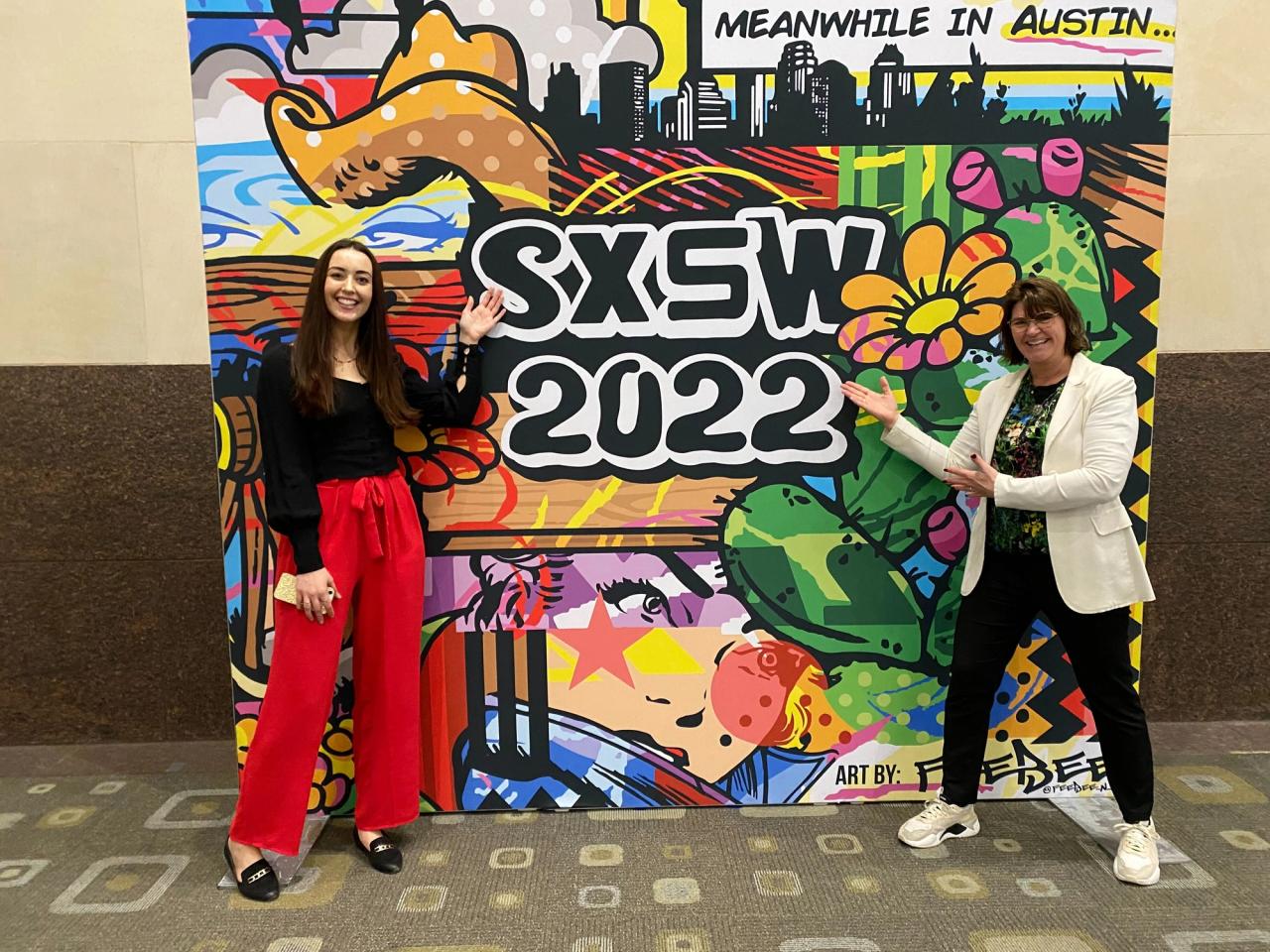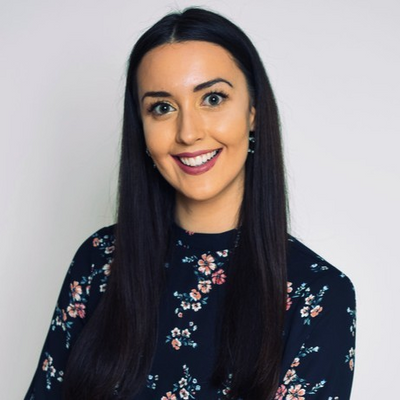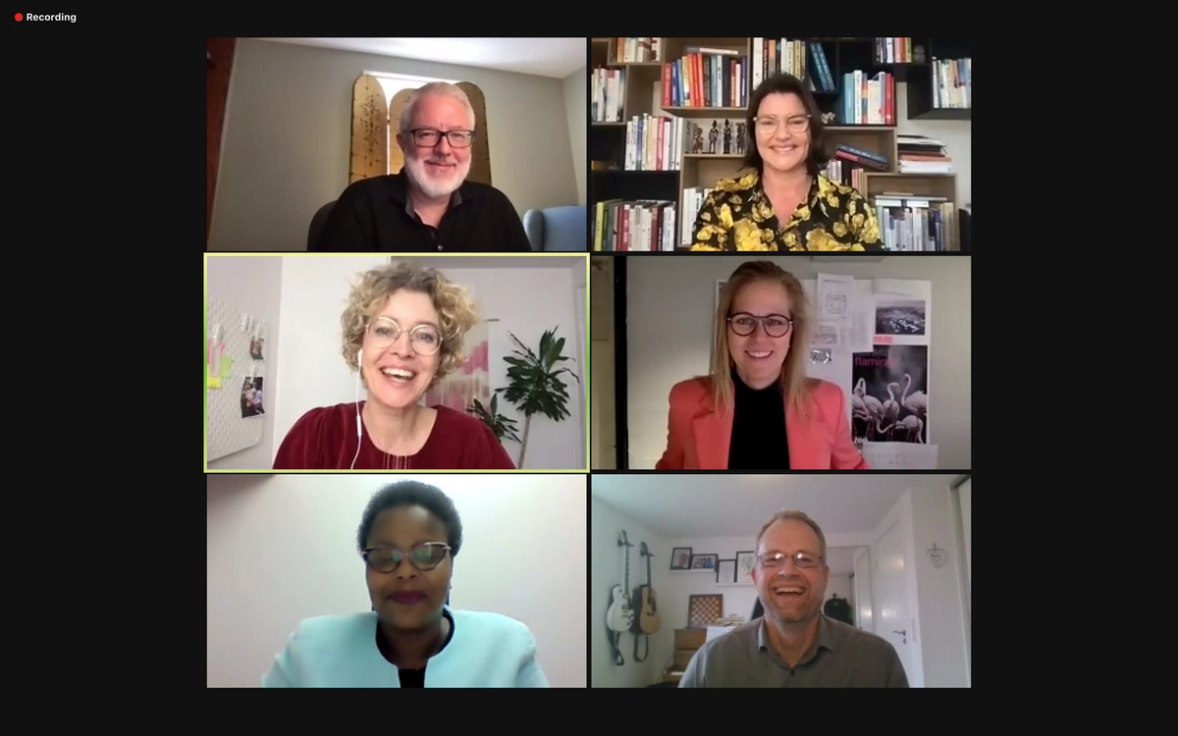South by Southwest®, forkortet til SXSW, er en årlig fusions-konference, som kombinerer film, interaktive medier og musik og teknologi. Den finder sted i midten af marts i Austin, Texas. Det begyndte i 1987 og er fortsat med at vokse i både omfang og størrelse hvert år.
I denne artikel vil vi gennemgå SXSWs historie og mission, hvad vi som virksomhed fik ud af at deltage.
"SXSWs mission er at byde velkommen til en mangfoldig gruppe af kreative fagfolk og innovative virksomheder til at videreudvikle karrierer og virksomheder, uanset om det er gennem musik, film eller teknologi." Forbes, 2018
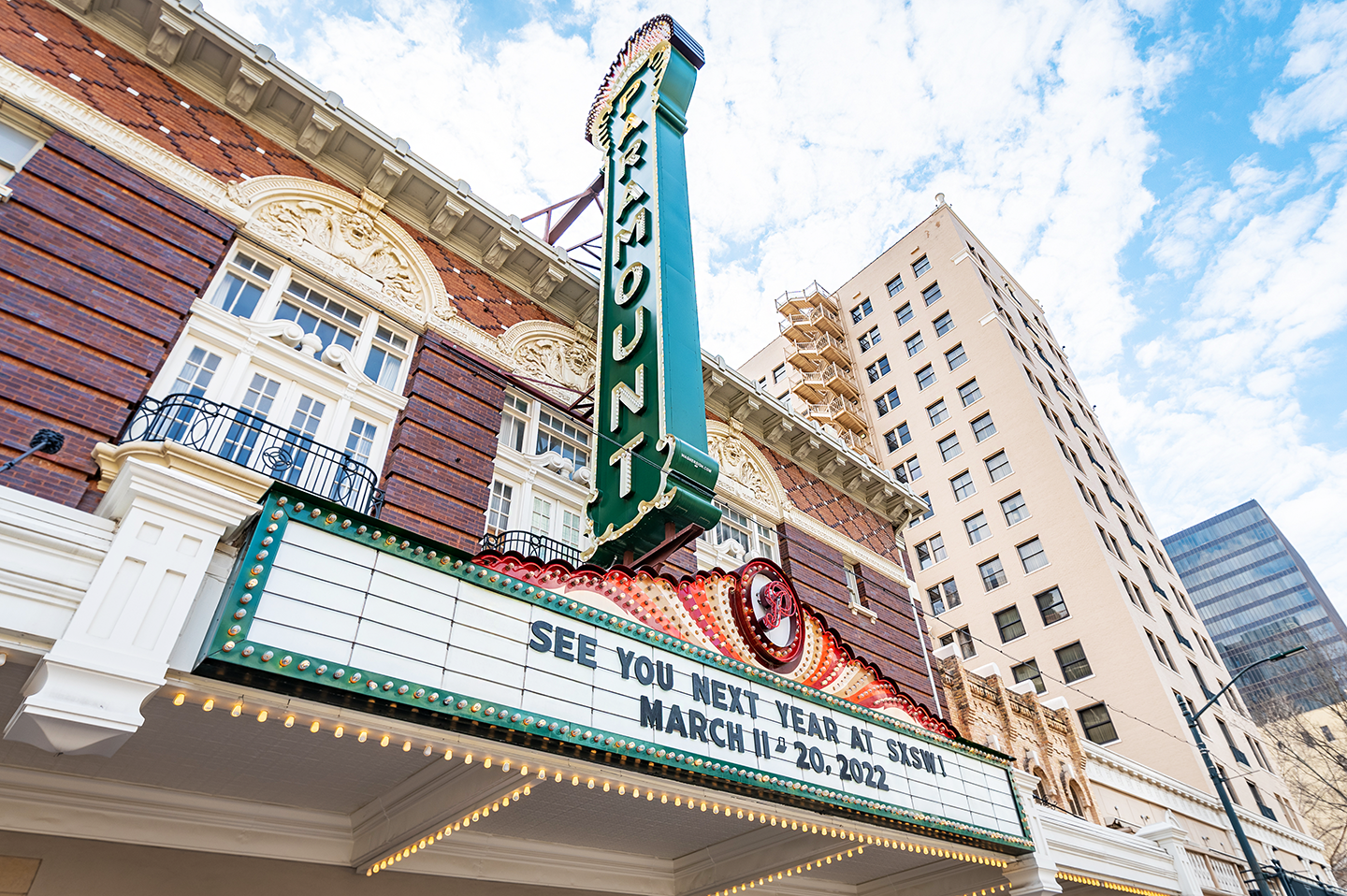
Foto: SXSW
Historien om South by Southwest® (SXSW)
I 1987 samledes en lille gruppe mennesker i Austin til en række lange diskussioner om fremtiden for underholdning og medier. Møderne blev afholdt i The Austin Chronicles kontorer, og deltagerne blev underlagt tavshedspligt. En grundlæggende holdning, som gruppen delte, var, at de lokale miljøer omkring kunst, kultur og musik var lige så talentfulde som alle andre steder på planeten, men at der manglede eksponering af talentmassen udenfor Austin. I disse diskussioner var musik en grundlæggende faktor, men gruppen var også nysgerrig på kunst og andre ideer. Et stærkt ønske om inklusion og at afsøge nye ideer var kerneværdier. Resultatet blev en smeltedigel af en konference, der ville samle et internationalt publikum til Austin. Til den første konference, der blev afholdt i marts 1987, havde man forventet 150 deltagere, men 700 mødte op på åbningsdagen. Præcis som initiativtagerne havde håbet, vandt Austins charme gæsterne over, og SXSW fik sit eget liv.
Konferencen voksede stabilt i de første syv år. Fra 1994 blev to nye arrangementer introduceret, Interactive og Film, og Johnny Cash gav en legendarisk keynote/performance. Dette skifte ændrede verdens syn på SXSW. Film- og digitale fællesskaber fand et nyt hjem i SXSW. Meget er sket siden 1987, men i sin kerne er SXSW fortsat en konference for det kreative miljø, hvor man kan udvikle sin karriere og mødes med mennesker fra hele verden og dele ideer. Her er hvordan SXSW har udviklet sig gennem årene:
- SXSW Music er nu den største musikfestival af sin art i verden!
- Musikbegivenheden er vokset fra 700 tilmeldte i 1987, til over 345.066 deltagere i 2023.
- SXSW Film Conference strækker sig over fem dage med paneldebatter, filmforevisninger og sessioner med filmskabere.
SXSW Interactive er fokuseret på ny teknologi. Festivalen inkluderer paneldebatter og oplæg med højt profilerede oplægsholdere, fester, et messeområde og en startup-accelerator.
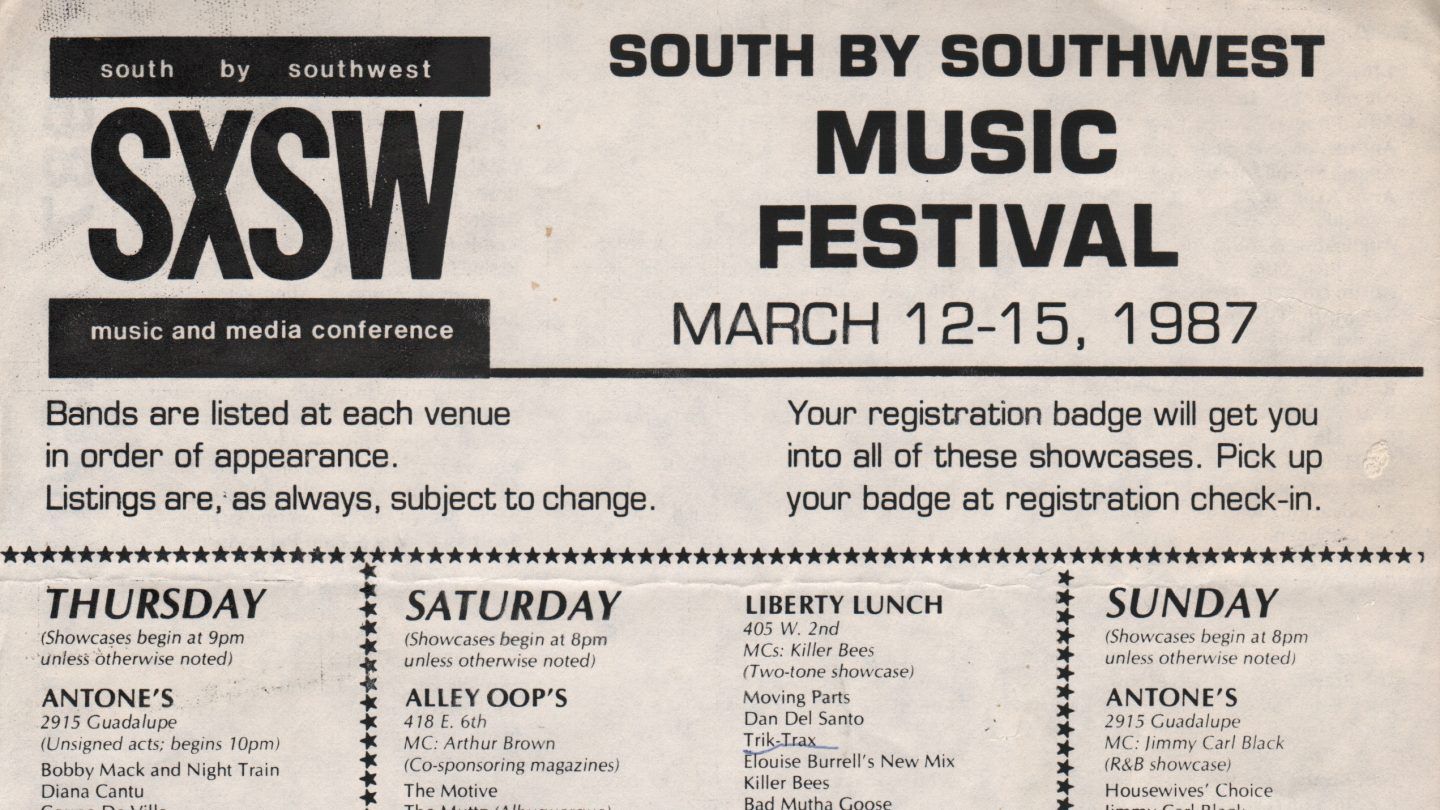
Hvem går til SXSW?
"South By Southwest har længe været en hellig årlig pilgrimsrejse for både brands, teknologivirksomheder og reklamebureauer, der tilbyder en hæsblæsende blanding af teknologi og kreativitet under den texanske sol." - Business Insider
SXSWs publikum er mangfoldigt - og det er det, der gør det så sjovt og interessant:
- Ledende tænkere og innovatører: Især fra teknologisektoren tiltrækker SXSW interessante influencers og iværksættere.
- Kreative og entertainere: ''Hold Austin Weird'' er et berømt slogan forbundet med byen. Ordsproget stammer fra byens ry for at samle alle mulige innovatører, kunstneriske ballademagere, hippier med mere.
- Start-ups og iværksættere: Mange nystartede virksomheder og iværksættere deltager i SXSW med en ambition om at finde den rigtige investor, få pressedækning eller blot at netværke med ligesindede personer og organisationer..
Nysgerrige mennesker: Det er vigtigt at huske, at ikke alle deltager i SXSW med et konkret mål for øje. Masser af mennesker går til SXSW for at blive inspirerede. Kombinationen af musik, kunst og teknologi kan noget helt specielt.

Foto: SXSW
Session på SXSW
Session blev inviteret til at deltage i SXSW 2022 af det Dansk Udenrigsministerium, Creative Denmark, DI - Dansk Industri og Denmark In New York sammen med en række danske tech-virksomheder. Den danske delegation havde til huse i Wanderlust Wine Co. i downtown Austin - det perfekte sted til at mingle, netværke, deltage i paneldiskussioner og nyde lækker catering og vin! Vi var der for at præsentere vores coachingplatform. Det lykkedes os at få introduktioner, buzz og konkrete salgsmøder i vores kalender som resultat af deltagelsen. Oven i det blev vi virkeligt inspireret af nyeste trends inden for teknologi. Vi blev skarpere på hvordan vi skal markedsføre vores produkt i USA. Og sidste men ikke mindst deltog vi i spændende paneler om flere emner:
Præsentation af nordisk lederskab:
Vi var glade for at vores administrerende direktør, Pernille Brun, fik lejlighed til at holde oplæg om Nordisk Ledelse. Der var over 700 personer der havde tilmeldt sig arrangementet! Pernille fremhævede centrale indsigter fra sin bog “On the Move, Lessons for the Future from Nordic Leaders” inklusive fordelene, faldgruberne og resultaterne ved nordisk ledelse. Og især hvorfor denne måde at lede på er relevant for ledere over hele verden, der ønsker at engagere fremtidens motiverede arbejdsstyrke.
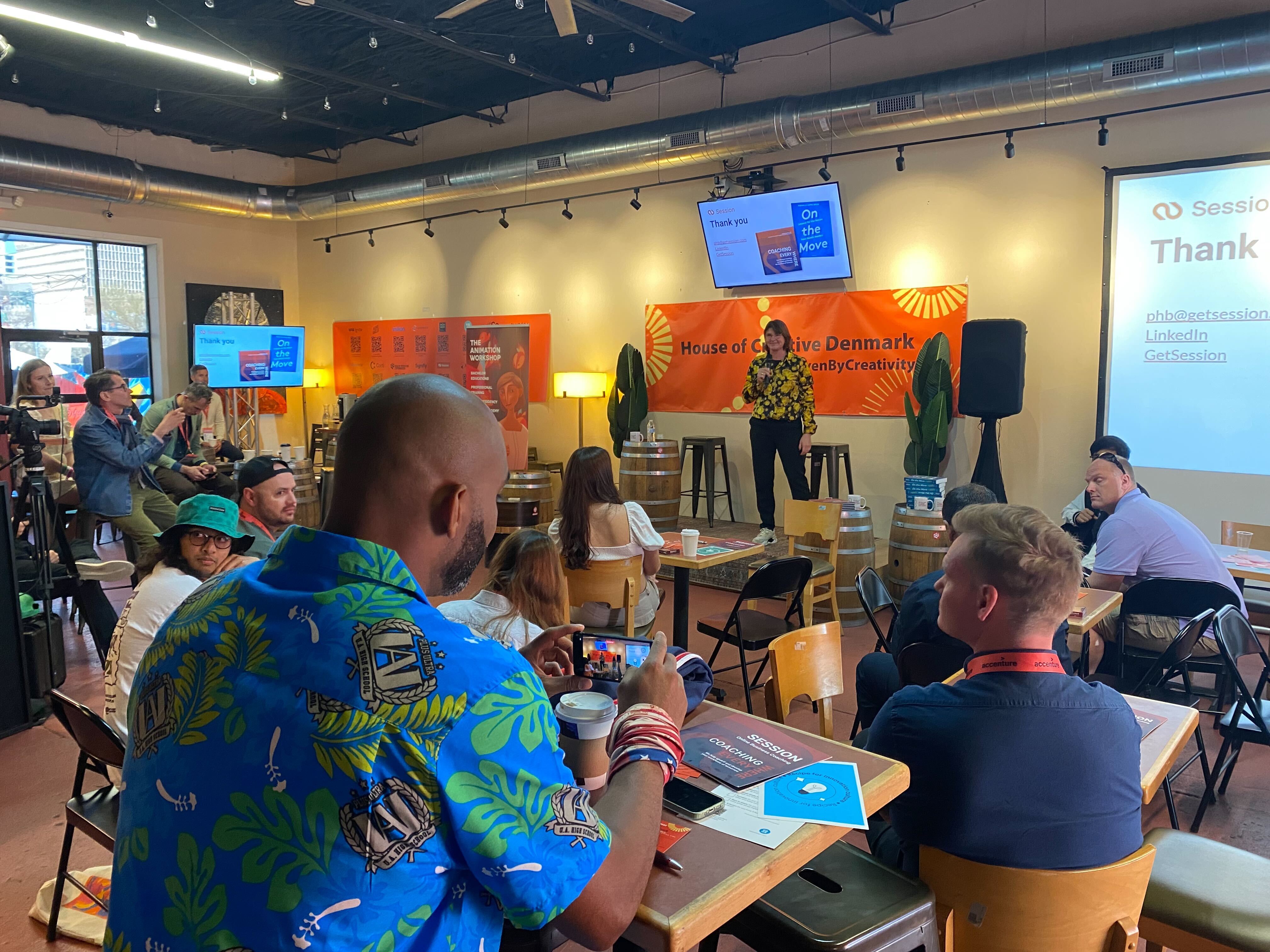
Fremtidens arbejde: Optimering til morgendagens professionelle
Sammen med Morten Becker Gronning, UX og produktdesigner hos AeroGuest, gav Pernille også et oplæg, som berørte, hvordan teknologi påvirker morgendagens arbejdsstyrke. AeroGuest arbejder inden for hotelbranchen for at strømline ind- og udtjekningsprocesser og sparer brugere tid på traditionelle indtjekning på skrivebordet. Selvom AeroGuest og Session opererer inden for helt forskellige brancher, kunne Morten og Pernille stadig drage en række interessante paralleller mellem de to virksomheder. Blandt andet diskuterede de tilgængeligheden af teknologi, som skaber lige vilkår for de mennesker, der ikke traditionelt har adgang til personlige tjenester.
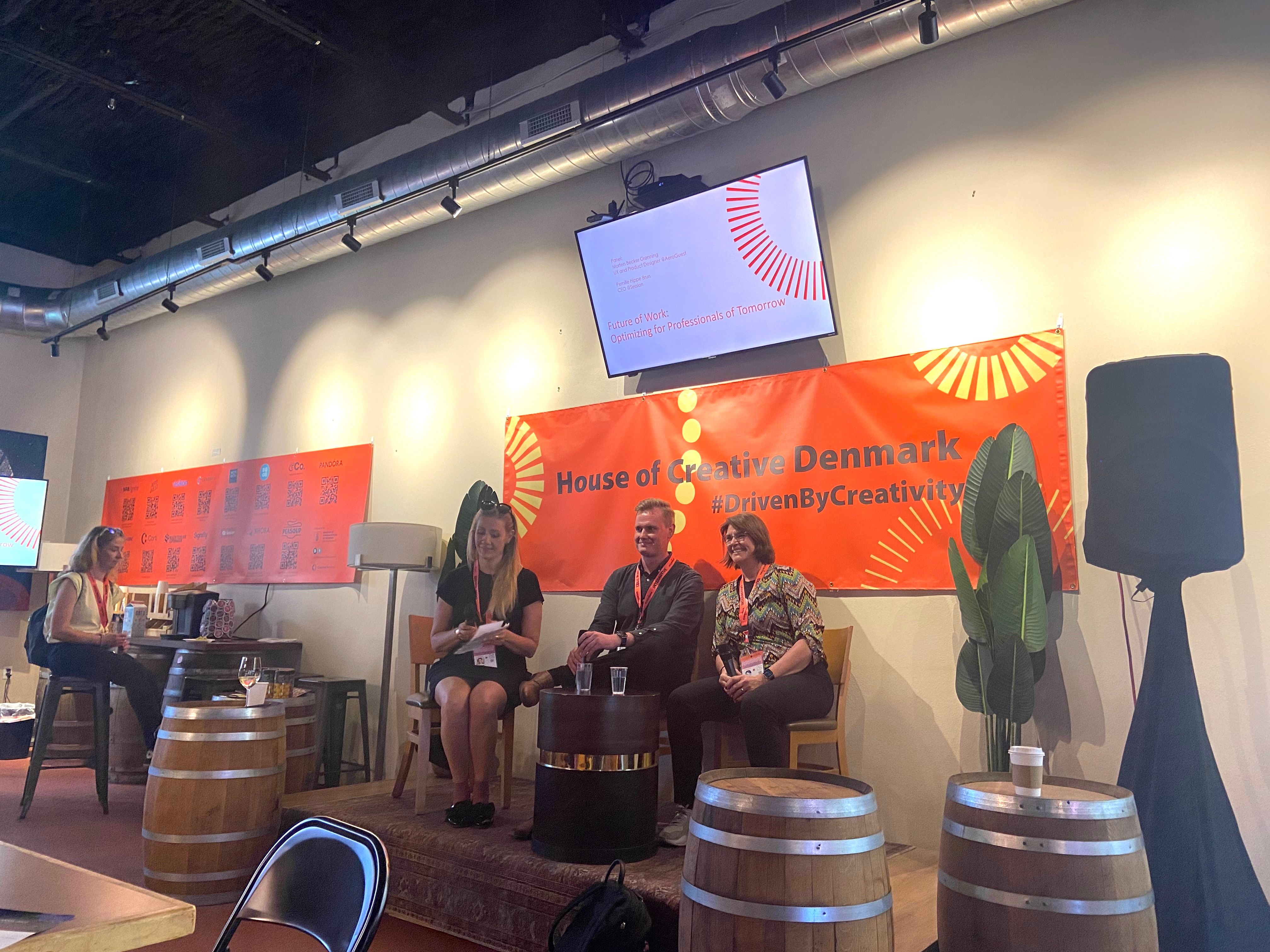
Highlights, Wine and Reflections from a Scandinavian Perspective
Towards the end of the conference, Pernille also attended a panel, ‘’Highlights and Wine” which was a wrap up session featuring a panel of CEO’s from different forefront startup companies from Denmark, including Session, Simon Max Bloch Lajboschitz from Khora Virtual Reality, Matias Møl Dalsgaard from GoMore, Dorthe Hove Olesen from Roskilde Festival, and Andreas Cleve, from Corti.
In this session the panelists were asked to reflect on their key takeaways and reflections on their own business strategy going forward following their participation in this year's SXSW. It was discussed how future business strategies may be influenced by developing tech, and Pernille addressed how the future of online coaching journey’s might be 3D, not 2D. Simon and Andreas also shared some particularly interesting opinions on the future of the metaverse going forward.
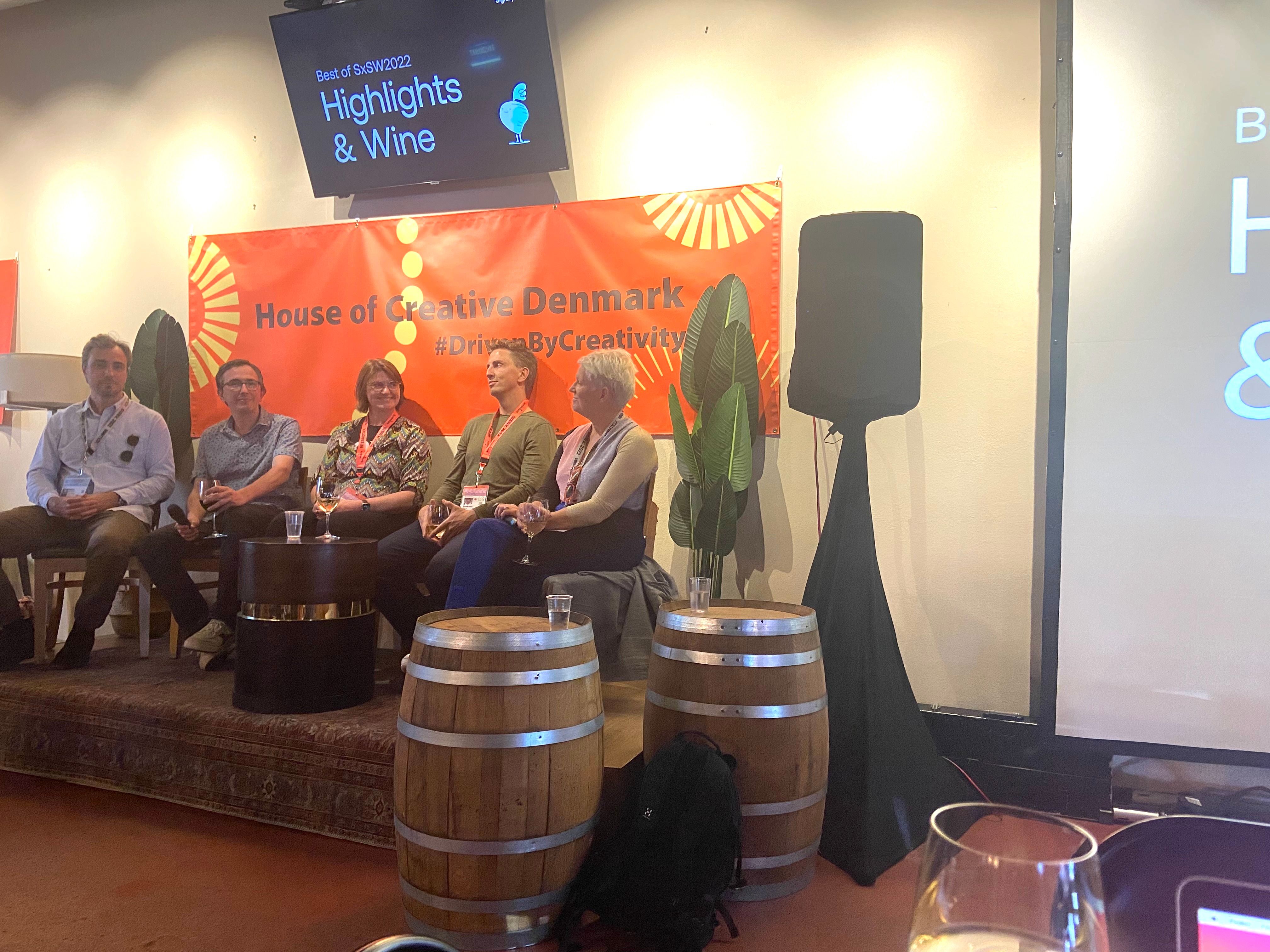
Opsummering
SXSW overgik vores forventninger! De mennesker, vi mødte, de virksomheder, vi blev introduceret for, og de nye ideer, vi kom hjem med, fyldte os med energi og gåpåmod. Vi forlod SXSW og følte os forynget, revitaliseret og begejstrede for fremtidens arbejde og lederskab! Vi vil gerne opfordre alle, der får en chance for at deltage - til tage afsted!
På vegne af Session vil vi gerne takke det Dansk Udenrigsministerium, Creative Denmark, DI - Dansk Industri og Denmark In New York for at organisere denne fantastiske oplevelse og invitere os til at deltage.

